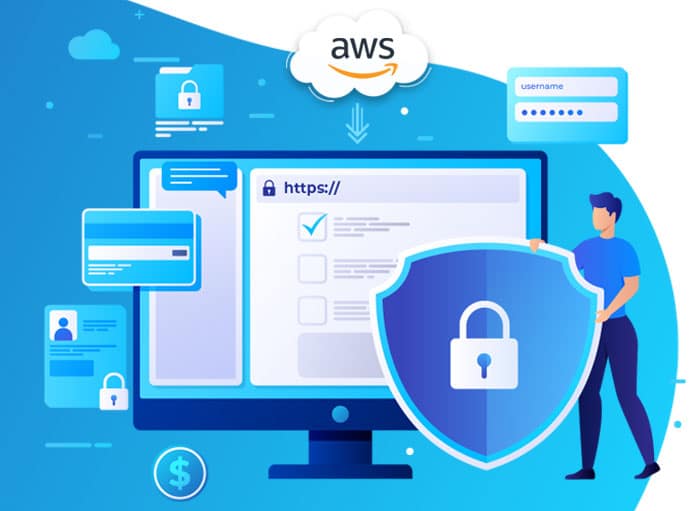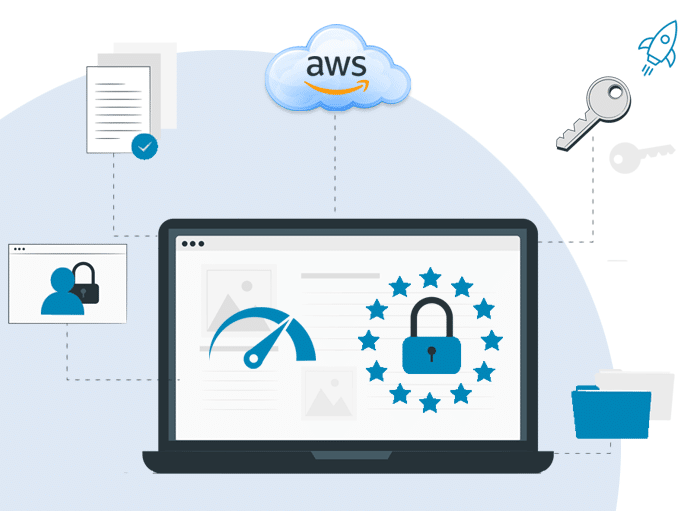
Key Cloud Security Challenges and Opportunities to Know
Tags: Cloud,Security
eWay Corp October 30, 2019 2 MIN READ

The businesses and organizations of today want applications and data to be accessible from anywhere and want them to be completely secure. Cloud technology makes this possible, nevertheless, making this a reality comes with certain challenges. The advantages of cloud technology can be reaped fully only when the cloud security challenges are addressed effectively.
The first step to ensure a secure environment for an organization’s sensitive information is identifying cloud security issues. The next step is using the right tools and choosing the right vendors for eliminating those issues.
As technology is an integral part of business operations today, the topic of cloud cybersecurity should be discussed right from the board level to the new employees.
The following are some of the chief cloud security challenges that businesses and organizations should be aware of.
5 Chief Cloud Security Challenges
1. DDoS Attacks
With businesses increasingly moving to the cloud, the cloud providers are being targeted more and more for malicious attacks. DDoS (Distributed Denial of Service) attacks are quite common now. As reported by Verisign, SaaS, cloud, and IT services are industries that were targeted most frequently during 2015’s first quarter.
A DDoS attack overwhelms website servers making it unable to respond to any legitimate user requests. In case this attack is successful, it leaves a website not working for hours or days. Such an event may lead to loss of brand authority, customer trust, and revenue.
To prevent such attacks, it’s crucial that cloud services are complemented with DDoS protection. The businesses of today have web-based applications and websites as their core components, which need the highest possible level of security.
2. Insecure Access Points
One of the biggest advantages of cloud technology is the ability to access things from any device and from anywhere. However, if the APIs and interfaces users use are not secure, hackers can discover such vulnerabilities and cause harm.
HTTP requests to a site are examined by a web application firewall to ensure the traffic is legitimate, such an always-on device facilitating the protection of web applications against security breaches.
3. Data Breaches
As reported by the Identity Theft Research Center, data breaches had reached a record-high mark of 738 in the US in 2014, with hacking being the top cause (by far). This valuable statistic emphasizes the need of securing sensitive data.
IT professionals have traditionally been able to have a high degree of control over the physical hardware and network infrastructure that secure proprietary data. When it comes to the cloud (in hybrid, public, and private scenarios), some of these controls are handed over to a trusted cloud service provider.
To mitigate this challenge, it’s important to choose the right vendor that has a proven track record in security.
4. Data Loss
When you move business-critical information to the cloud, a major concern is security. Losing any data from cloud because of some natural calamity, malicious tampering (DDoS), or accidental deletion, can have disastrous effects on an enterprise business. A DDoS attack is often only a deflection for a bigger threat, like an attempt of deleting or stealing data.
To deal with this challenge, a disaster recovery system should be in place along with an integrated system for mitigating malicious attacks. Additionally, protection of every layer of the network, which includes the layer 7 (application layer), should be inbuilt in a cloud security system.
5. Alerts and Notifications
Proper communication and awareness of security threats serves as an integral element of network security, with the same applying to cloud security. If a threat emerges, sending alerts to the application managers or appropriate website needs to be part of the security plan. Prompt and clear communication facilitates speedy mitigation of threats, as it allows the right steps to be taken leading to minimization of the threat’s impact.
Opportunities Associated with Cloud Migration
Alongside the security risks of cloud computing, switching to the cloud comes with several advantages too – the biggest ones being greater flexibility and cost savings.
Choosing to move to the cloud allows you to develop a data center right from scratch. If done right, cloud facilitates a much cleaner situation. Moreover, infrastructure can be separated out much easily in the cloud, enabling you to isolate environments.
This implies that cloud environments can be managed more easily and are less susceptible to attacks compared to traditional infrastructure.
For example, with the cloud, automating the procedure of launching services and spinning up containers is easier. If done right, this implies that data centers can make sure that the right controls are always in place. However, if there are errors in the automation, your environment can be destroyed.
Move to the Cloud and Address the Cloud Security
If you’re a business thinking about whether you should move to the cloud, eWay Corp can guide you right on the way to cloud migration. As an AWS partner, our cloud professionals can explain the security risks of cloud computing and how to take the right steps to mitigate the risks.
eWay Corp ensures businesses and organizations highly secure cloud services and cloud application security. We can facilitate seamless migration of Microsoft Windows Server to AWS EC2. Choose eWay Corp for incident-free cloud migration and reliable cloud security services!



